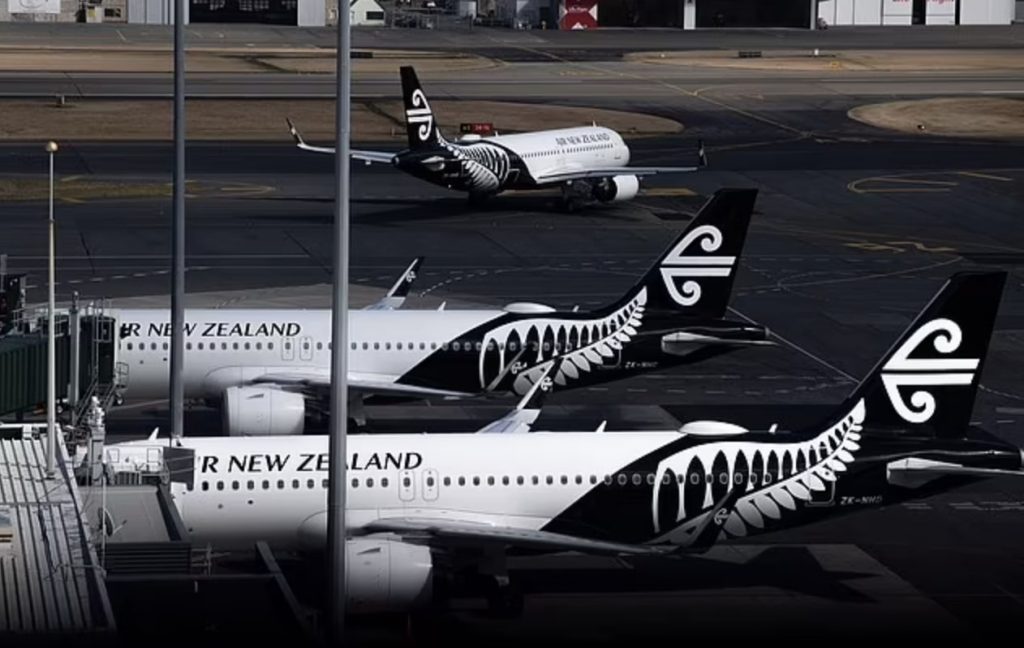A picture of a newborn on an aircraft wearing an adult surgical face mask with holes cut for her eyes has stirred a heated internet discussion.
The photo has already gone viral, and although many have praised the mother for attempting to shield her pink-clad infant from Covid, others have accused her of ‘child cruelty.’
However, the photographer who snapped the picture on an Air New Zealand aircraft from Auckland to Wellington on July 1 described it as a “super-sweet moment” and not anything evil.
He remarked that the infant was overjoyed, leaping about and laughing. It made the wait to get off the plane more enjoyable.
However, several internet users were offended by the picture, with one adding, ‘If I saw this on a flight, I’d remove the mask myself.’
Others called the picture “so very sad” and stated it was “hazardous” to plug their breathing openings in such a way.
Mr Opperman, who has now made his Instagram account private, justified the mother, claiming that the mask was not snug enough around the baby’s face.
He explained that he thought it was a combination of laughing and doing her best to protect her baby with the equipment she had.
Many others concurred with him, with one commentator adding that the kid lifted her hand in the photo ‘to ensure you there’s enough holes and gaps in the mask to breathe properly and don’t be a Karen and complain over a Facebook picture.’
Another person commented that the infant “may be preparing as a superhero haha!” The world isn’t ready for SuperBaby yet.’
Many additional commenters thought the photograph amusing and compared the infant to figures from horror films.
On domestic flights in New Zealand, like in Australia, all passengers above the age of 12 must wear face masks.
It is advised that parents pick a mask that fits well and is comfortable to use for smaller kids.
The mask should completely cover the child’s nose, mouth, and chin, leaving no gaps above, below, or on the sides.
According to Dr Amanda Kvalsvig, an epidemiologist at the University of Otago Wellington, masks should be well-fitted so that air does not move around the edges.
‘That necessity for a solid seal around the mask makes me wonder if a larger mask will be successful on a small face,’ she says.
According to microbiologist Siouxsie Wiles, the infant on the plane’s mask “may limit the quantity of virus they breathe in a little.”
‘However, it’s generally advisable to invest in masks developed for children.’






